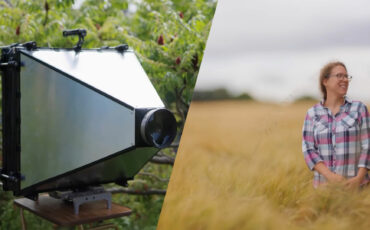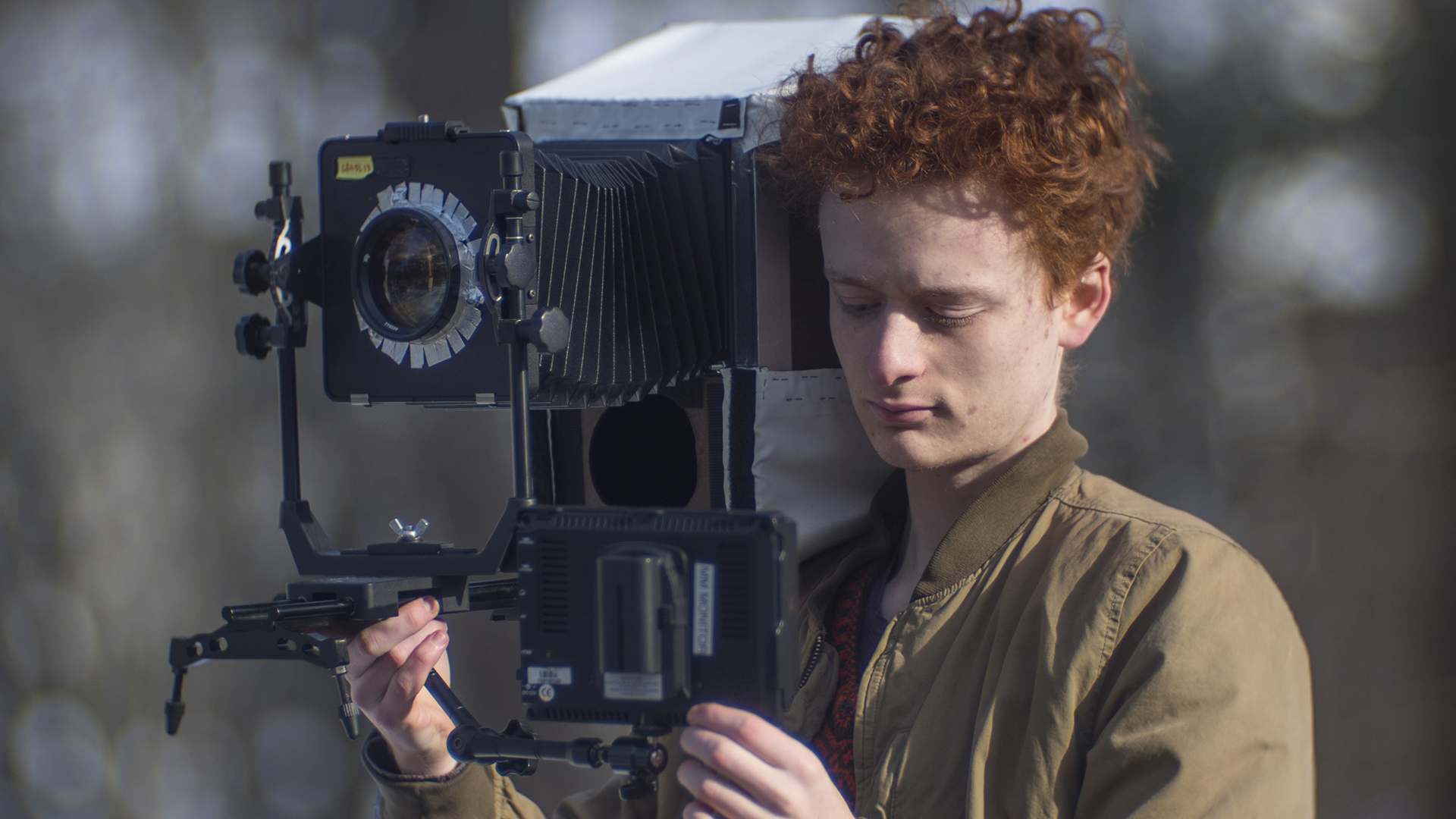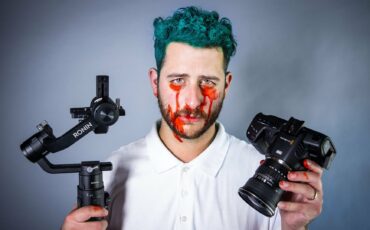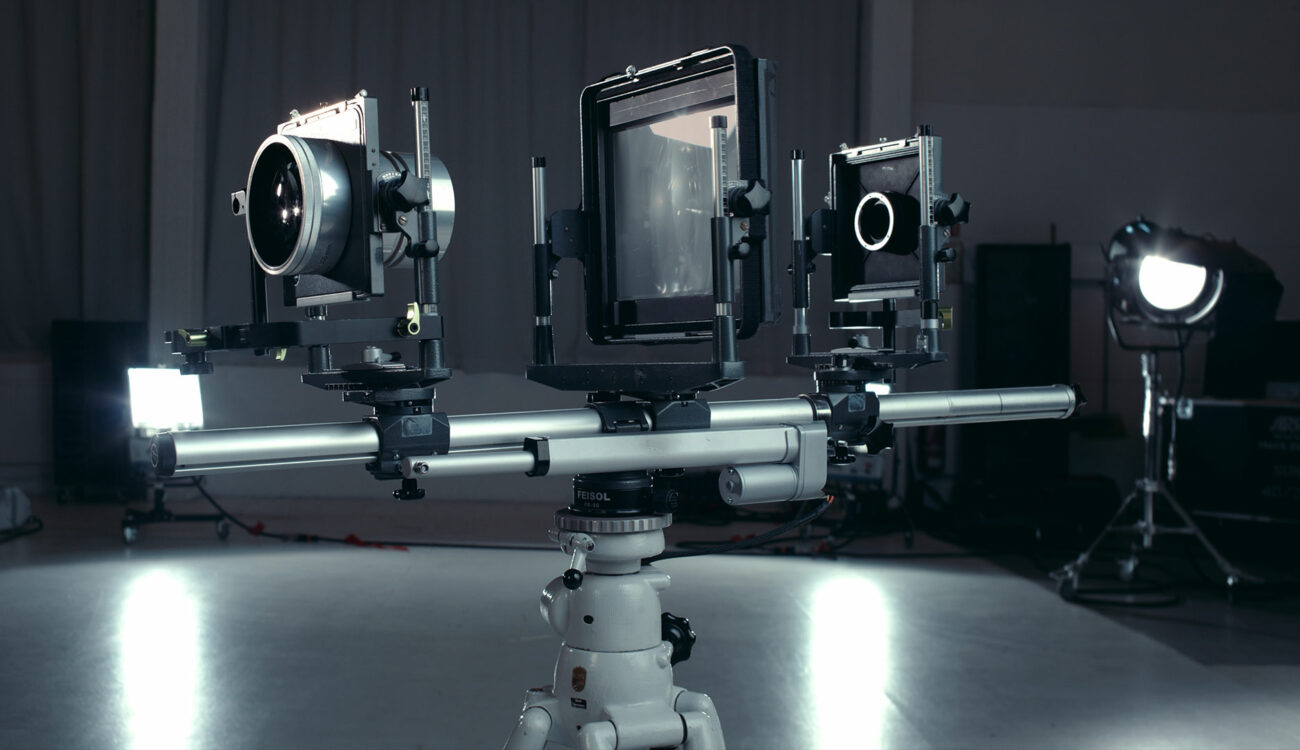
The new Media Division Epic Episode focuses on building an impossible lens with the Super35 equivalent of 29mm f/0.3. To achieve it, Nikolas used a Leitz Hektor 300mm f/2.8 lens and built an 8×10 large format DoF-adapter camera with a projection plane and focusing system and filmed an underwater short movie with it.
There are YouTubers that don’t publish videos often, but when they do, you can be sure they are of high-quality content. One of these YouTubers is Nikolas Moldenhauer from the Media Division. We already reported on some of his videos including experiments with fast vintage lenses, and his anamorphic episodes. Now, after more than a year of work, Media Division drops another Epic Episode.
Almost three years ago, Nikolas explored the world of ultra-fast lenses in the Media Division Epic Episode 13. He showed us experiments with ultrafast lenses below f/1 – legends, budget options, modding and testing – including a modded X-Ray lens Zeiss R-Biotar 100mm f/0.73. That episode, however, still used a conventional method of capturing the lens image circle directly by a camera’s sensor.
Building an impossible f/0.3 lens – Media Division
This time, Nikolas aimed to go even further and as he puts it, “you can’t break the laws of physics, but you can go around them.” In this spirit, he set out on a journey to build the impossible lens – a 29mm f/0.3 (Super35 equivalent). Impossible, because for an f/0.3 to exist, there has to be a workaround, but we’ll get into that later on.
To me, it’s always amazing to see just how much effort goes into each Media Division Epic Episode. Countless hours of production result in unique content for us filmmaking nerds. If you like what Nikolas does, consider joining the Media Division YouTube channel to support him and stay updated on his doings.
The almost 55-minute-long video is conveniently divided into chapters, so you can skip some parts if you already have some knowledge about the subject. I still recommend watching the whole thing to appreciate the high production value and well-compiled technical cinematography knowledge.
After explaining the term depth of field (DoF), Nikolas starts with the first (theoretical) part going in-depth about the history of large format, the equivalency of lenses, and 8×10 large format lenses.
Leitz Hektor 300mm f/2.8 and the camera
The second part of the video is dedicated to the actual building process of the large format camera/lens. Nikolas talks about more suitable lenses for the project, his final lens of choice is the Leitz Hektor 300mm f/2.8 lens – one of the fastest 300mm lenses that covers the 8X10 area and was designed for medium format projectors. With a 107mm entrance pupil, the lens produces an extremely shallow DoF.
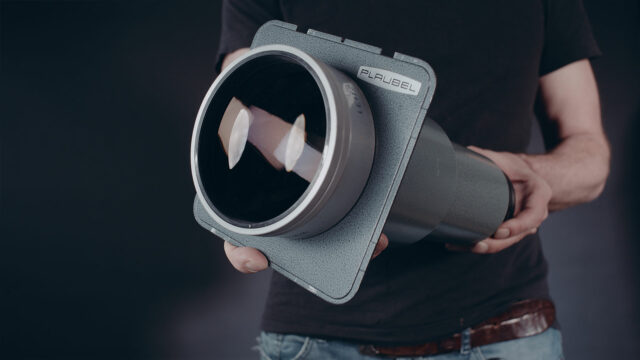
What follows is the building process of the large format camera. Nikolas uses an 8X10″ ground glass that captures the image from the lens and then places a digital camera at the back to capture the image from the glass. This system is simply called a DoF adapter. Previously, the DoF adapters were used with small CCD sensor cameras to use photographic lenses and produce shallow DoF footage.
There are a few challenges that needed to be tackled during the process. Perhaps the most important of them is the extreme vignetting and hot spotting on the ground glass that requires collimators, so fresnel lenses had to be included in the optical structure. Another challenge was the focusing process. Nikolas built a motorized focusing system that moves the front element. The resulting equivalent is 40mm f/0.4 on full-frame and 29mm f/0.3 on Super35.
Producing the ultra-shallow-DoF short film
With this setup, Nikolas films a short movie “The Iron Sea” and also includes a behind-the-scenes in his video explaining how he shot certain scenes and what the challenges of the impossible-lens-setup were. At the end of the video, Nikolas also compares Hektor with another “more normal” lens, the Nikon 300mm f/5.6.
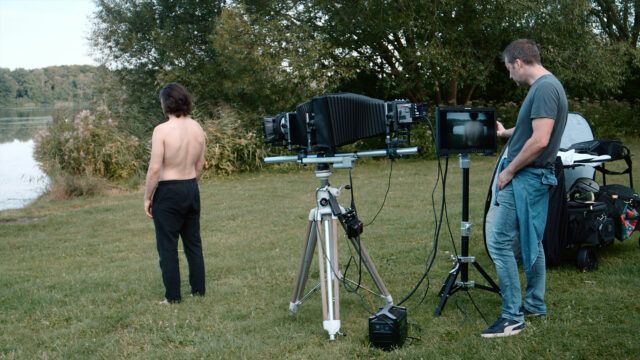
He also demonstrates what using an even larger lens – a massive 990mm f/8 – would require. The lens would cover one square meter of ground glass resulting in around 20mm f/0.2 lens equivalent. For practical reasons, Nikolas did not carry on to build the huge camera for this lens.
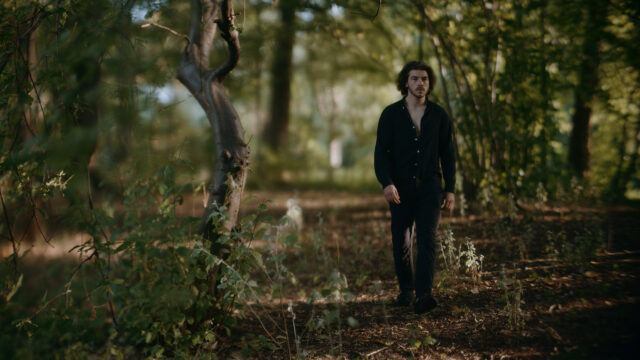
Thanks to the colorist Filippo Cinotti from Plasma Production, the resulting short film named “The Iron Sea” is also available as a separate YouTube video in HDR. You can enjoy this version, if you have a compatible HDR viewing display (that is 1000 nits or more).
The fascination of extremely shallow DoF
As Nikolas mentions in his video, most viewers have already gotten used to seeing very shallow DoF clips shot with very long focal lengths – typically with wildlife footage, for example. What still fascinates people, are shallow DoF shots with a wide field of view because these are so rare and “impossible” to achieve conventionally.
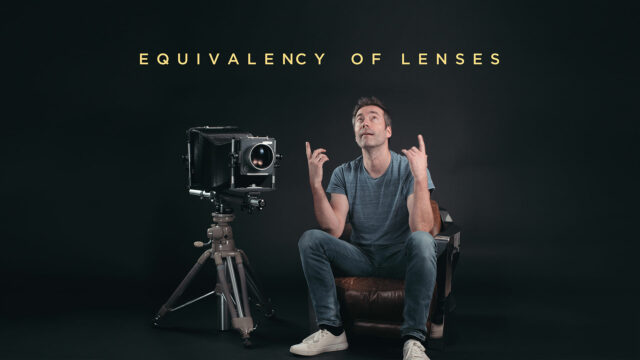
This Media Division project, while extremely interesting, is of course not based on an entirely new idea. In August 2022, we have seen a very similar project from the DIY Perks Youtube channel. Before that, back in 2018, we reported about a digital camera obscura project from the filmmaker Zev Hoover. Regarding all the other projects on the topic of building an impossible lens including the recent DIY Perks project, Nikolas says:
Like we say in this video, the technique is not new and it has been done by many in many variants. There even used to be a Facebook group for people with these kinds of cameras (DoF Adapters and Digital Obscura).
By the way… our camera was ready to shoot 7 months before the DIY Perks video dropped… so, both projects are completely unrelated. For the underwater shots, we had to wait for summer: we really wanted to go beyond just the camera: we also produce a film worth your time. Art AND Technology.
Nikolas Moldenhauer, Media Division
Nikolas also mentions two other “DoF” projects from the past – the “Coatwolf II” camera or a much larger DoF camera. It seems that the fascination with a very shallow DoF on wide-angle clips dates way back.
What do you think about the latest Media Division f/0.3 lens project? Do you sometimes DIY stuff to improve your workflow with cameras? Let us know in the comments section underneath the article.
